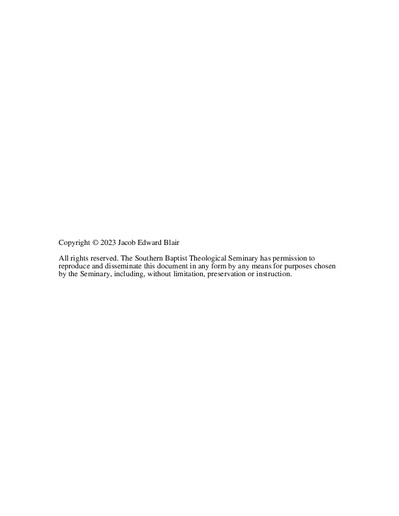There Is a Light That Never Goes Out: The Shining Face of Moses in Exodus 34:29−35
Subject
Bible. Exodus XXXIV, 29-35--Criticism, interpretation, etc.Moses (Biblical leader)
Revelation on Sinai
Abstract
The shining face of Moses in Exodus 34:29–35 is a peculiar instance that is never explicitly repeated or explained in the Pentateuch, let alone the Hebrew Bible. To add to the confusion, Moses’s face, if translated literally, is “horned” not “shining.” Again, this is never explicitly explained in the text. However, this event, I argue, is pivotal in understanding the Sinai tradition. Subsequently, understanding the Sinai tradition, which makes up the bulk of the Pentateuch (Exodus 19–Numbers 10:10), is critical to understanding the logic of Genesis to Deuteronomy. So, what exactly is happening in this passage? This thesis argues that Moses’s shining face in Exodus 34:29–35 is a transformation into a royal priest and a renewed image of YHWH. Interpreting Moses’s encounter this way informs Israel on how to be fully human and relate to the law.
To achieve this argument, the thesis contains four chapters. In chapter 2, I argue that the cosmic geography of the ANE, vis à vis the cosmic mountain temple, is the primary theological grid for the Pentateuch, helping the reader understand what occurs atop Mt. Sinai in Exodus 32–34. In chapter 3, I show how the book of Exodus is focused on the cosmic mountain concept by examining Exodus in four literary movements: Exodus 1–18, 19–31, 32–34, and 34:29–25. In each movement, I highlight the temple/priestly clues that further inform Moses’s transformation in Exodus 34:29–35, concluding with how to interpret the much-debated “qrn” within the passage. In the fourth and final chapter, I explore how this interpretation of Moses’s transformation connects to the rhetorical aim of the Pentateuch regarding Israel’s anthropology and relationship to the “law.”

